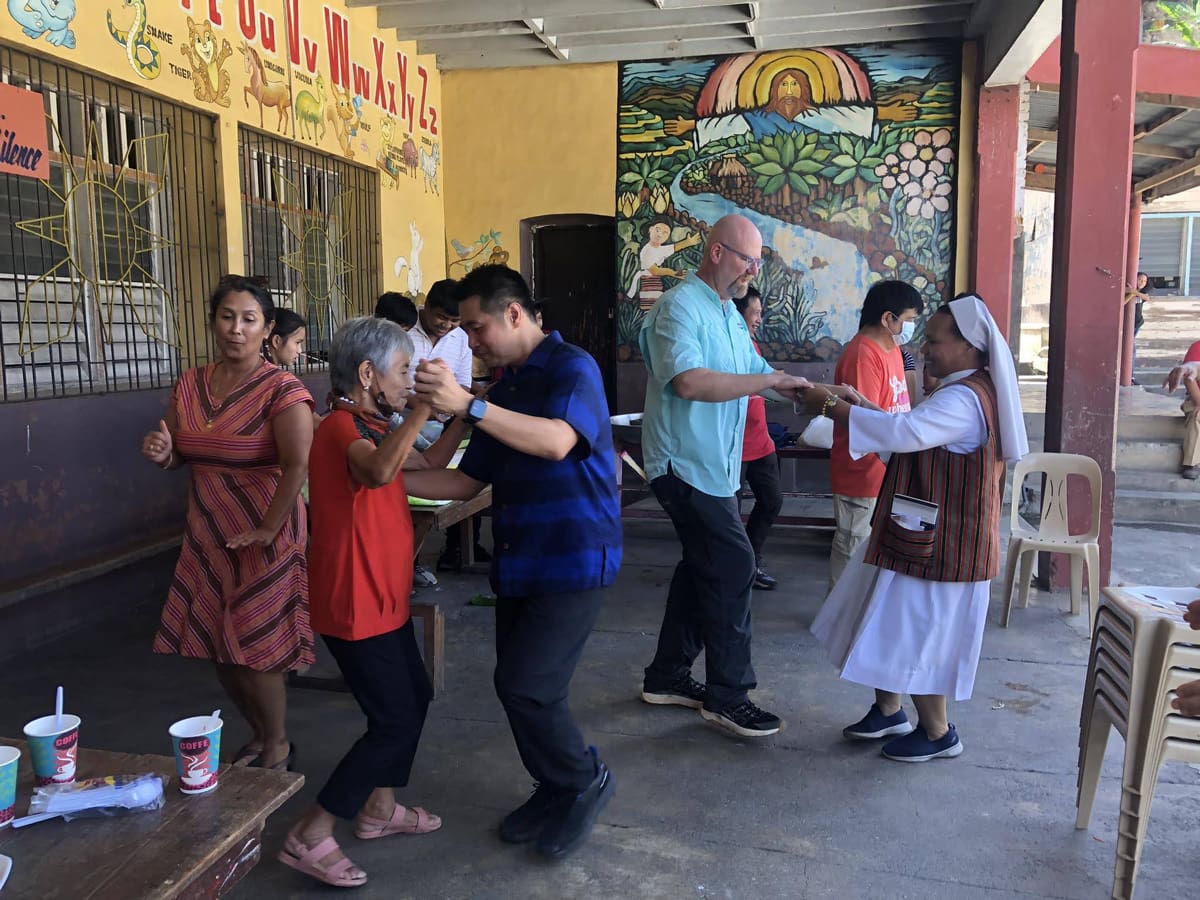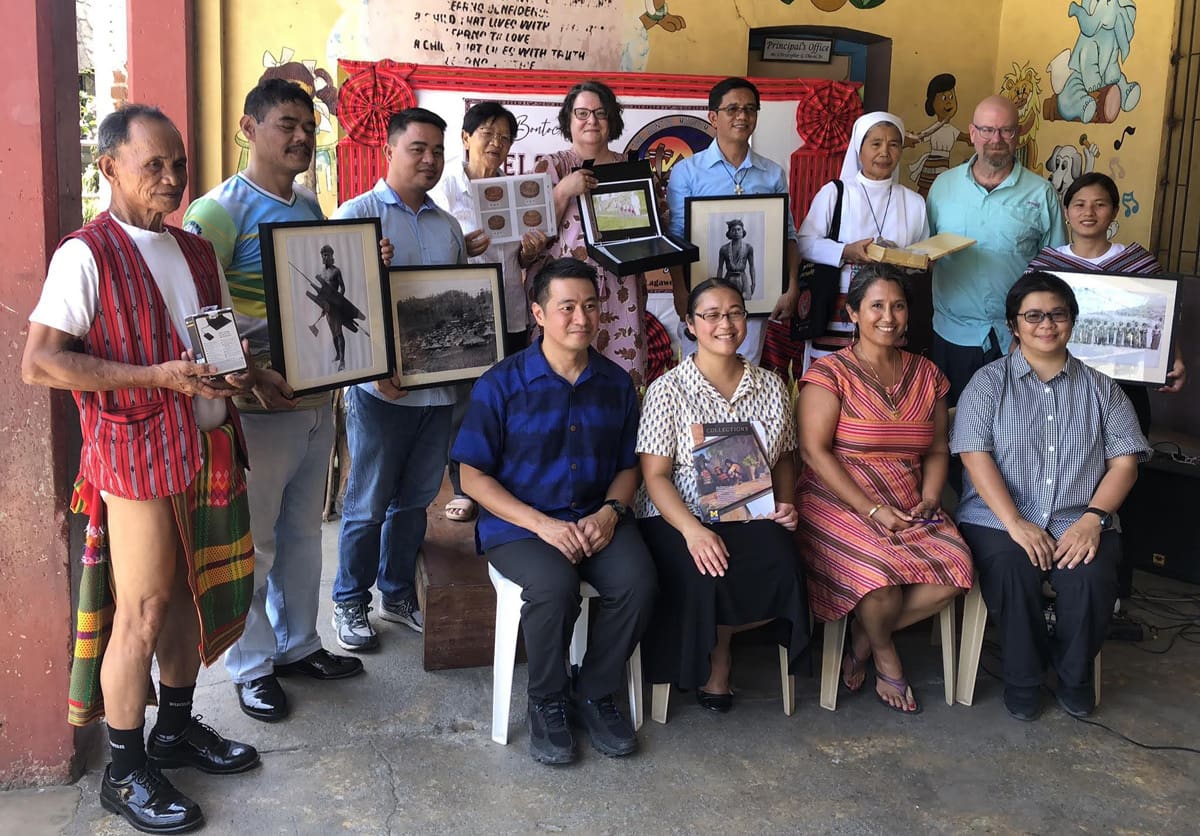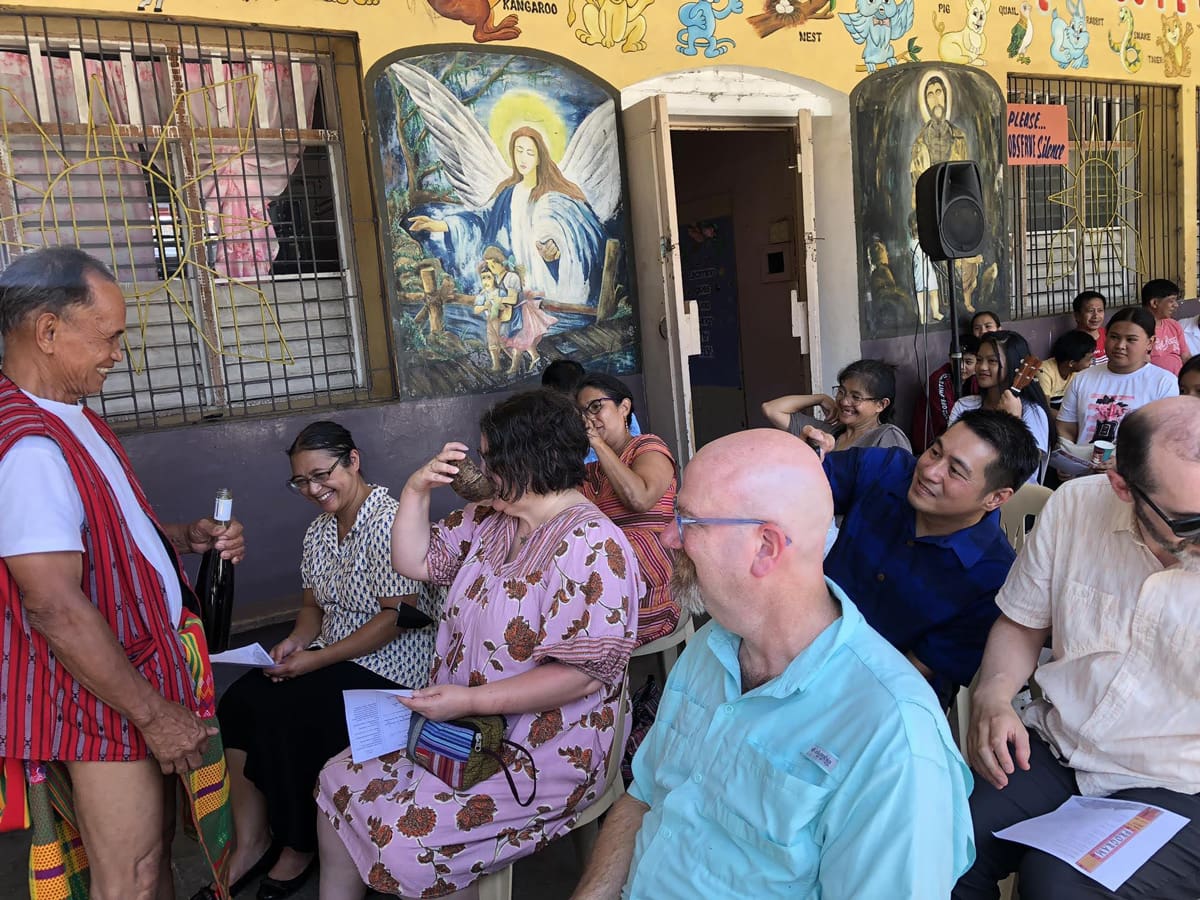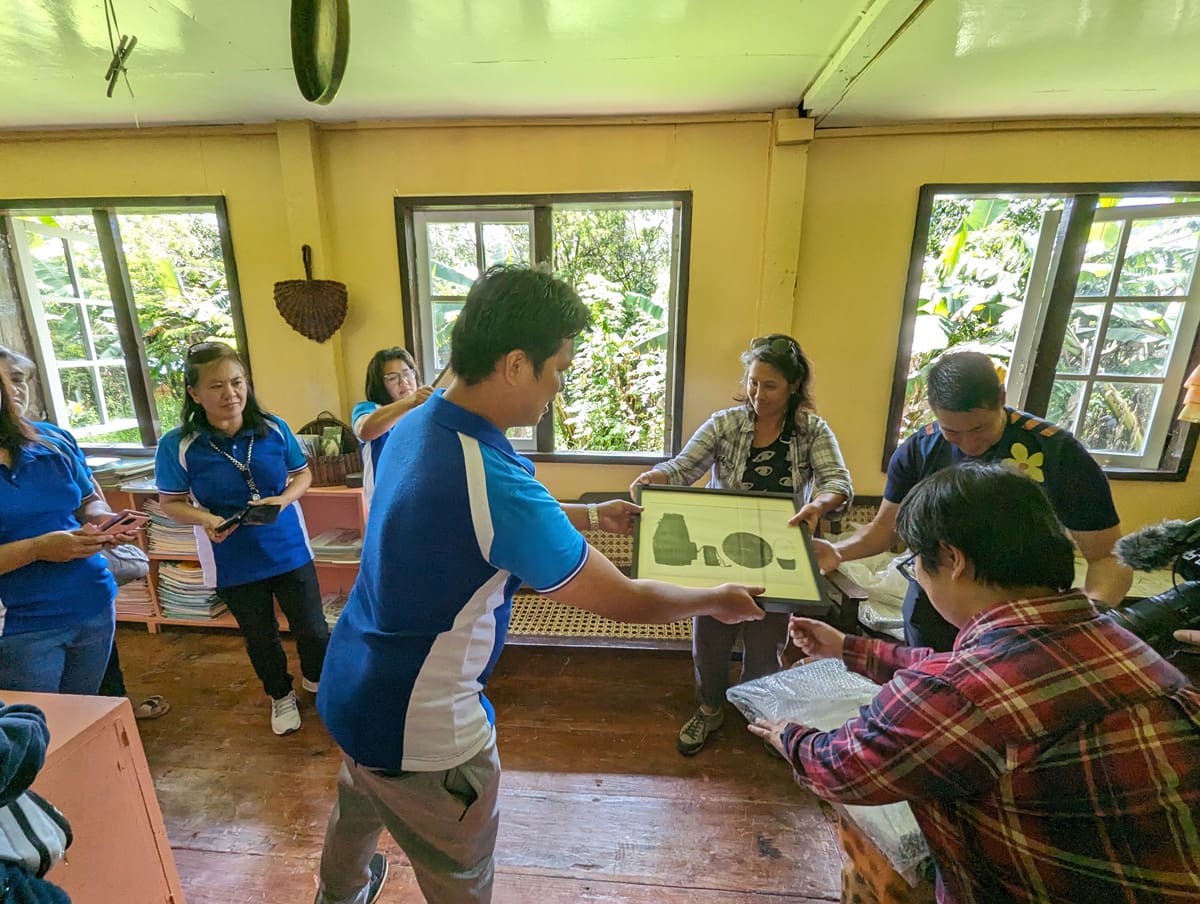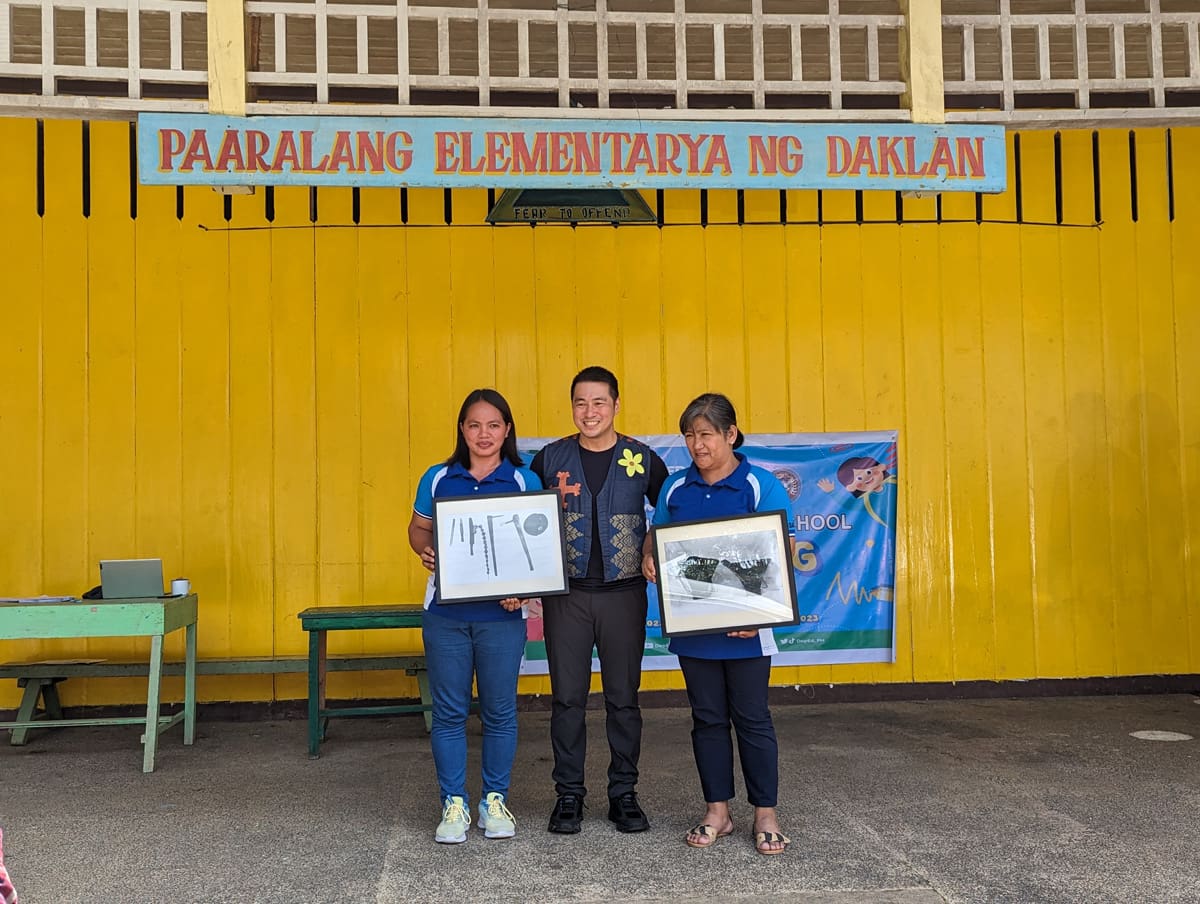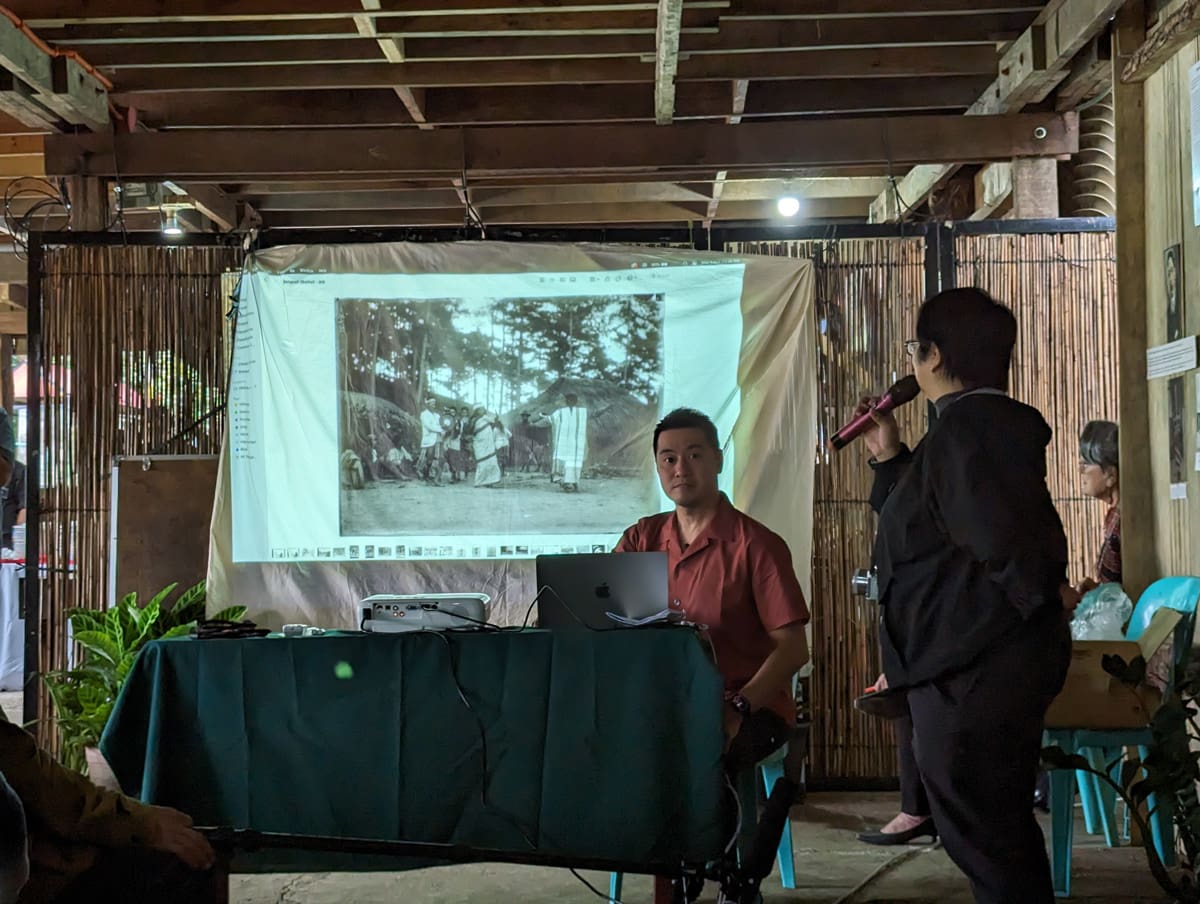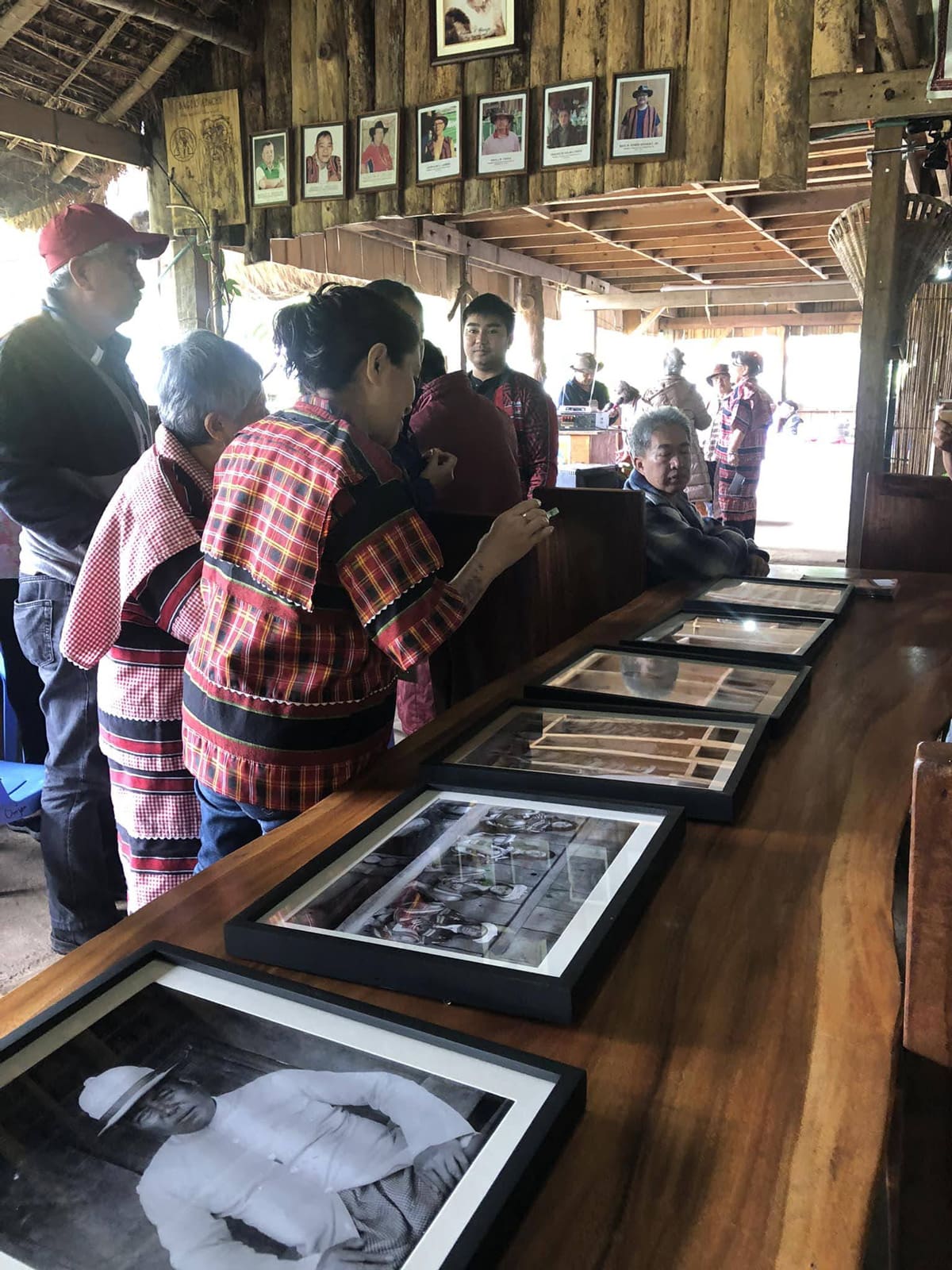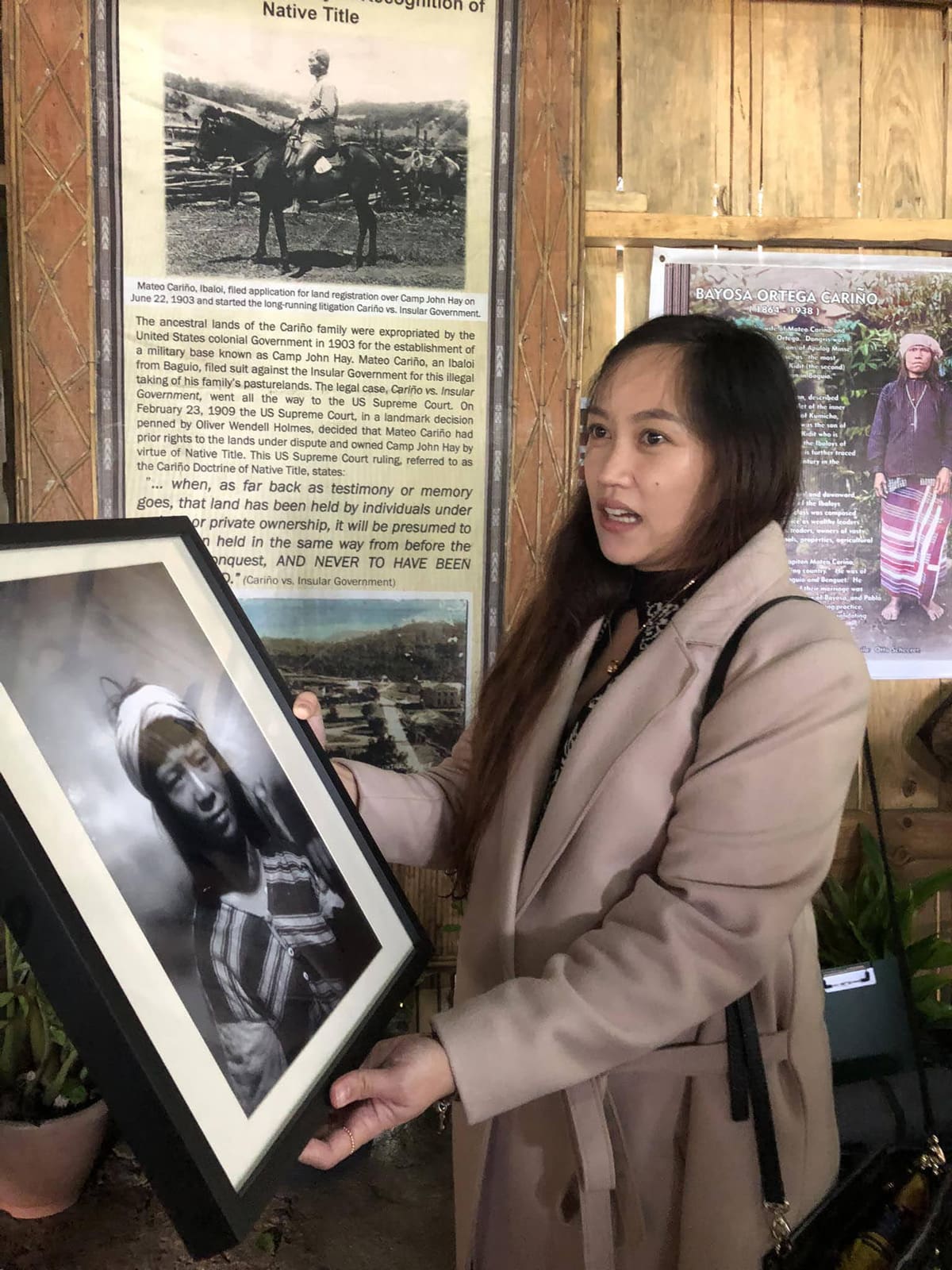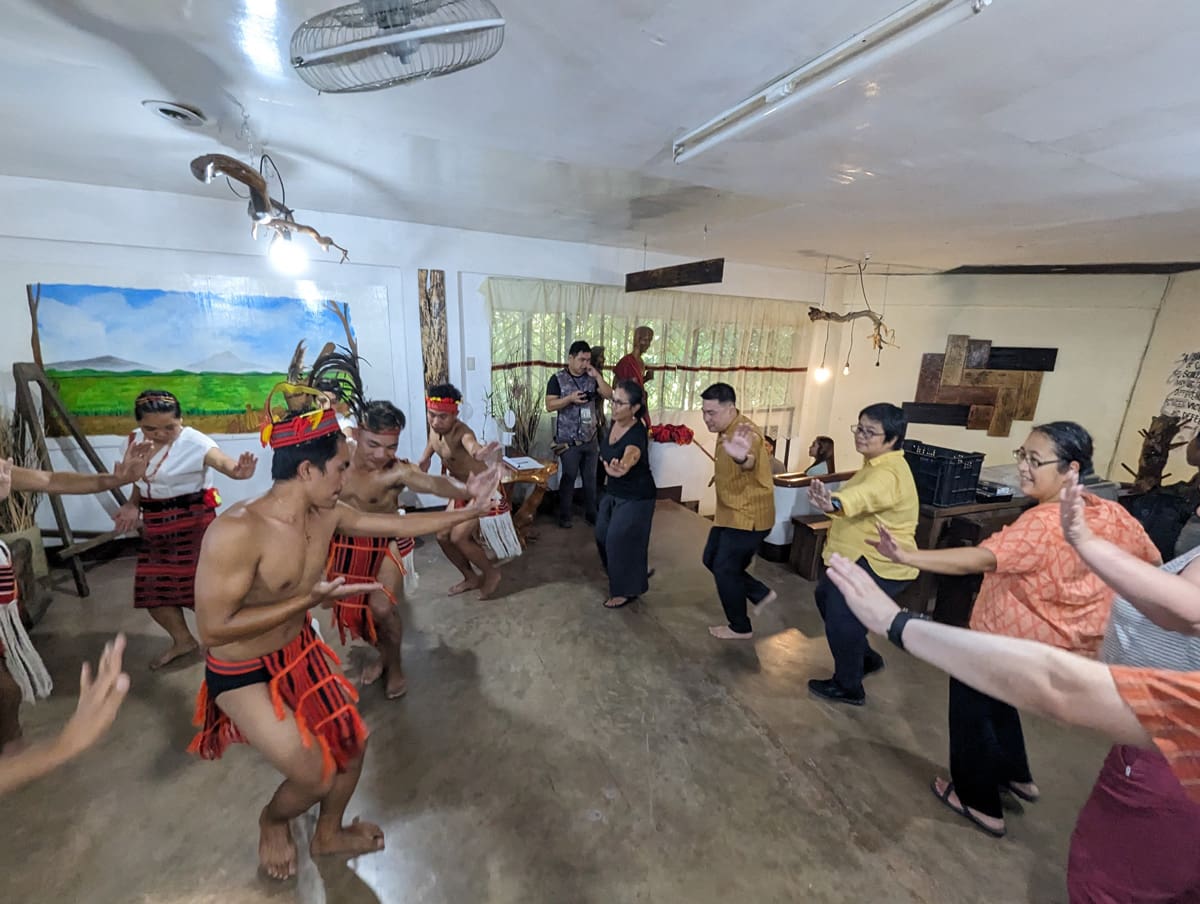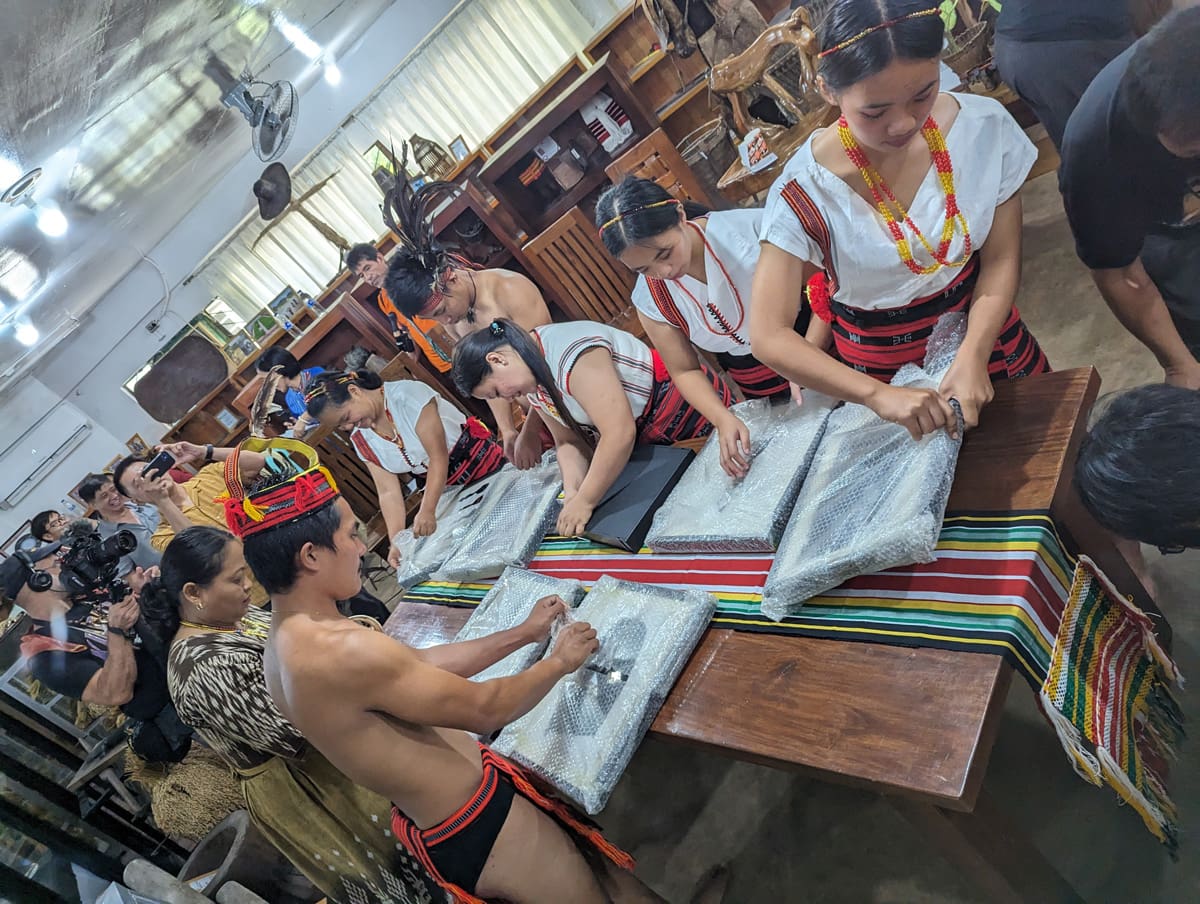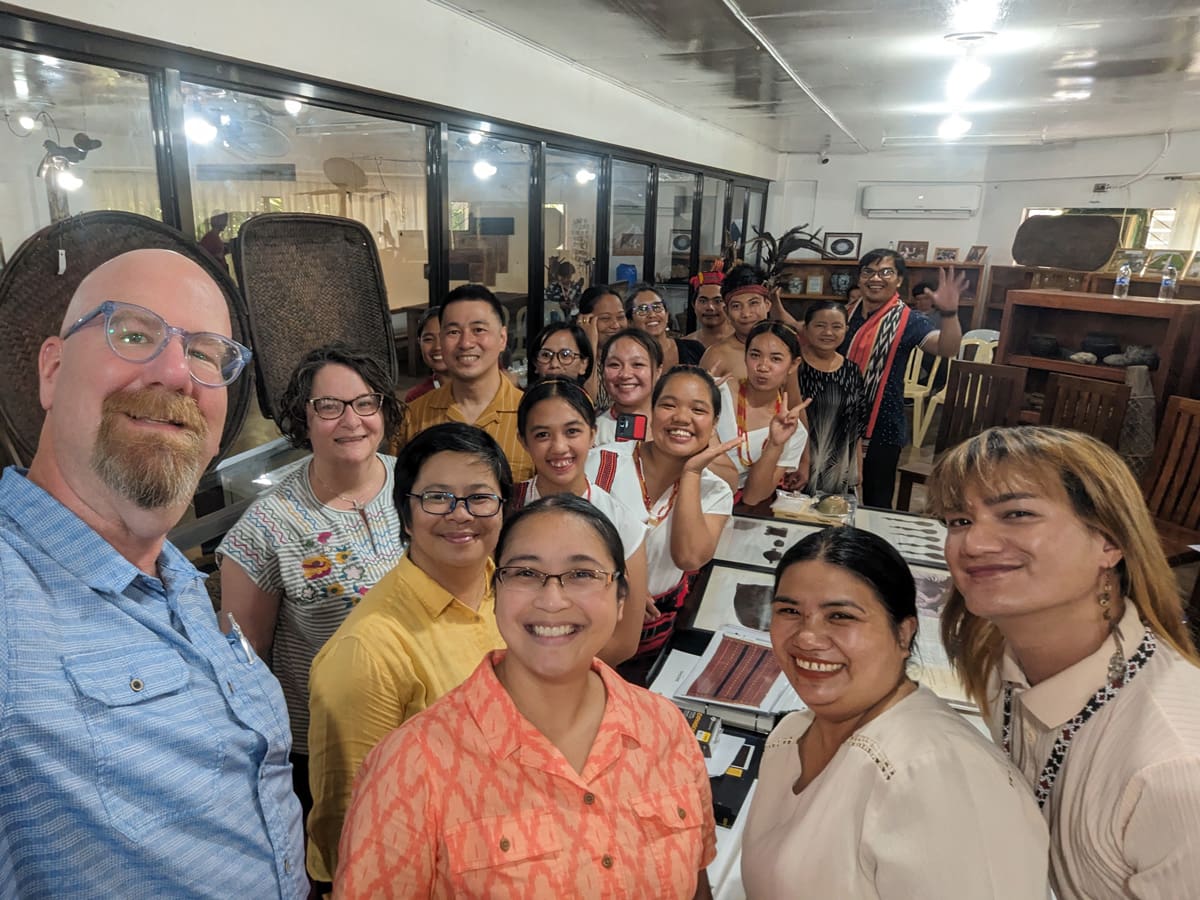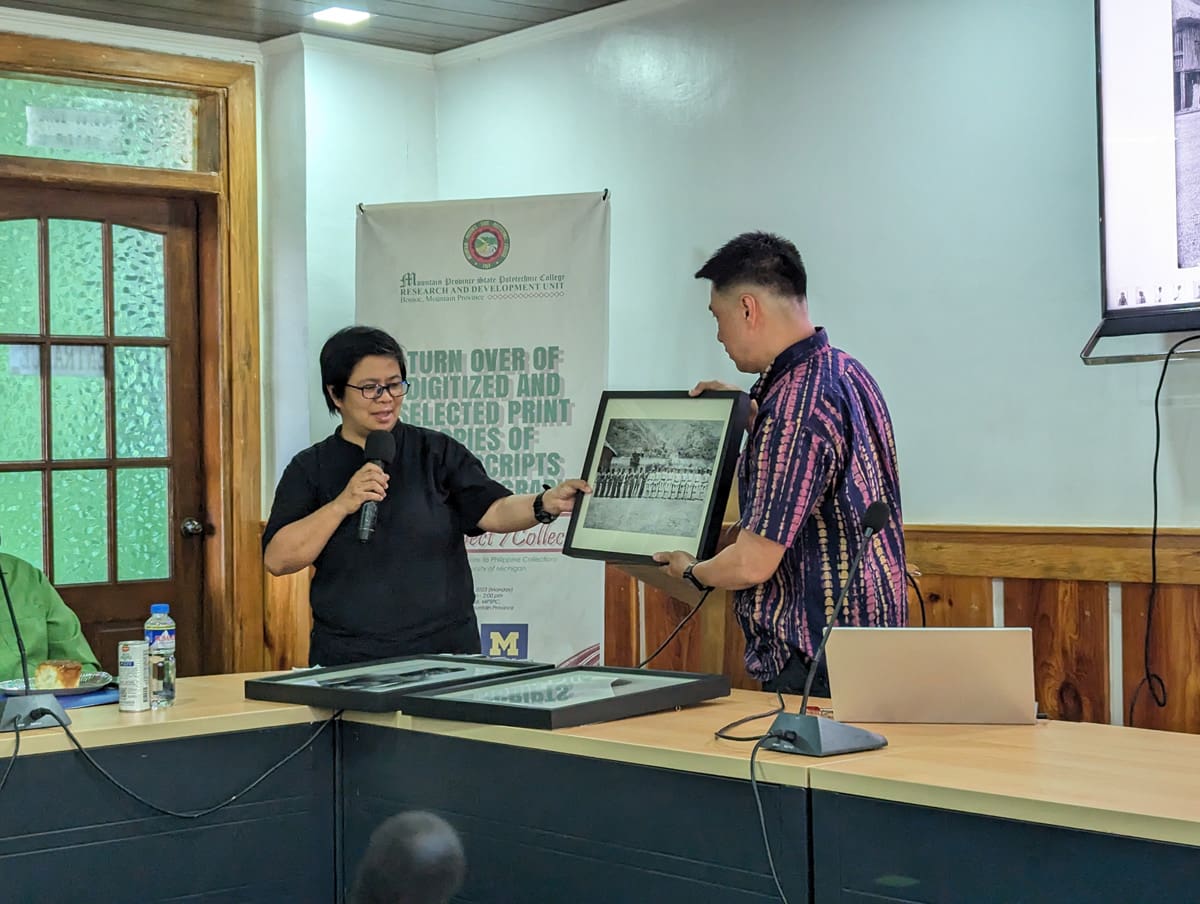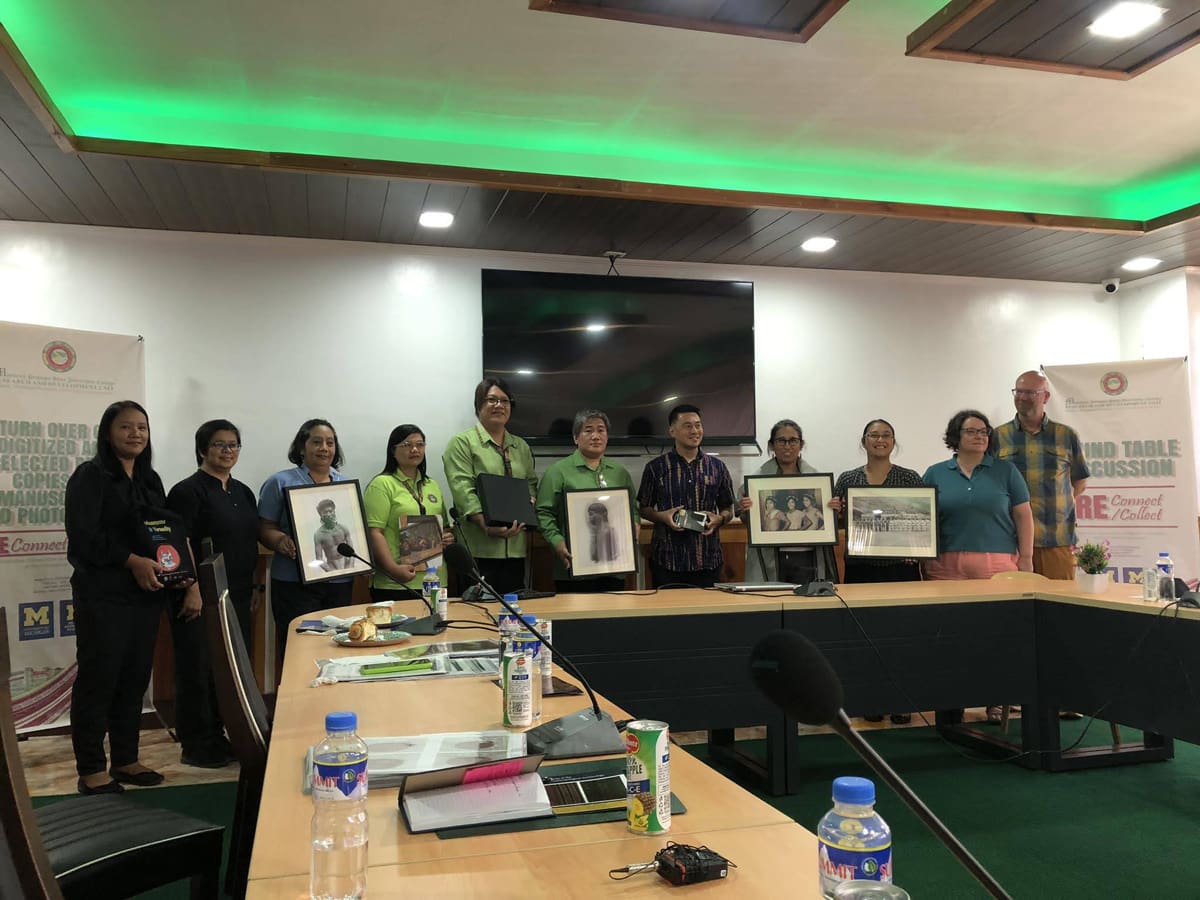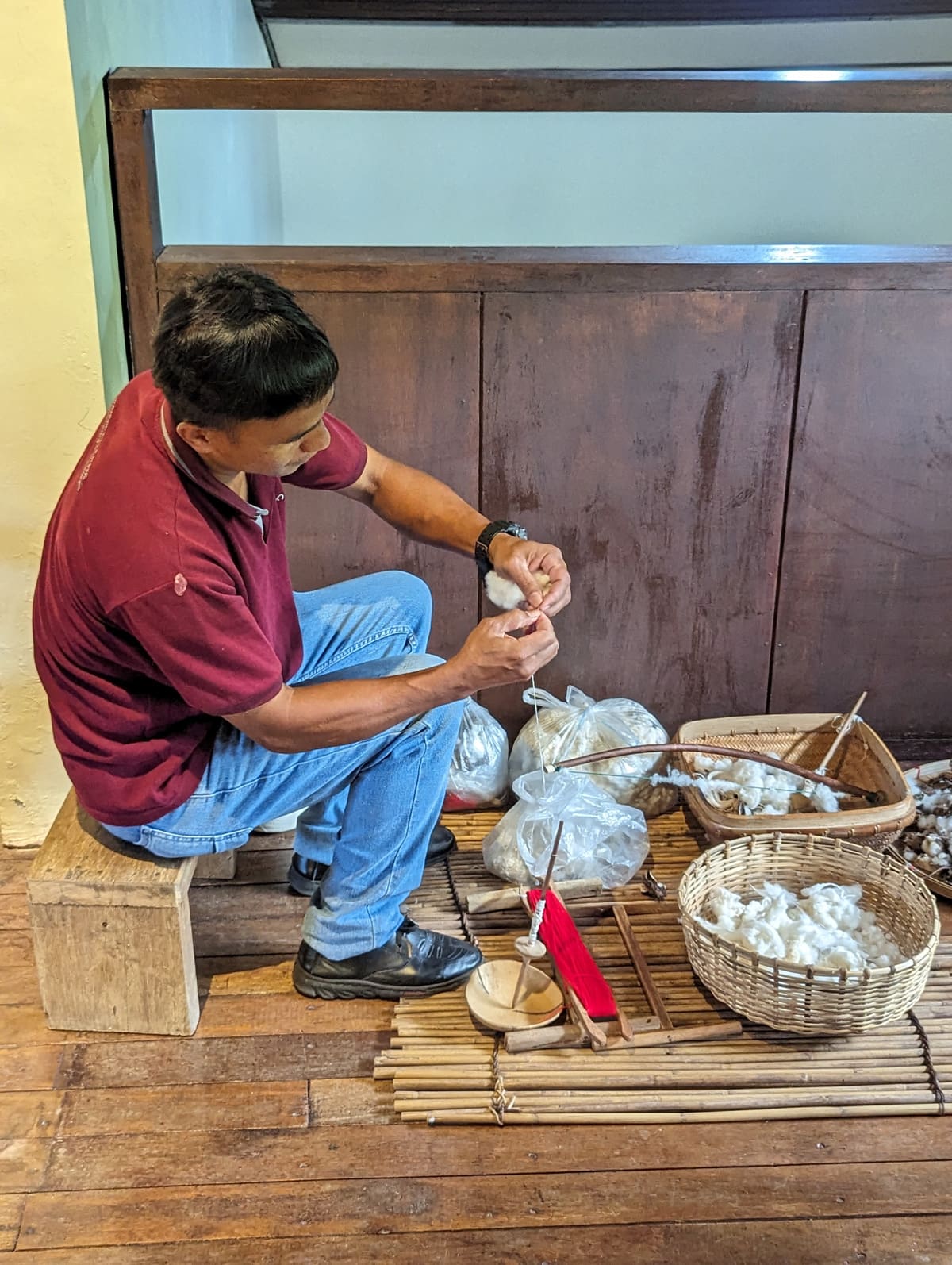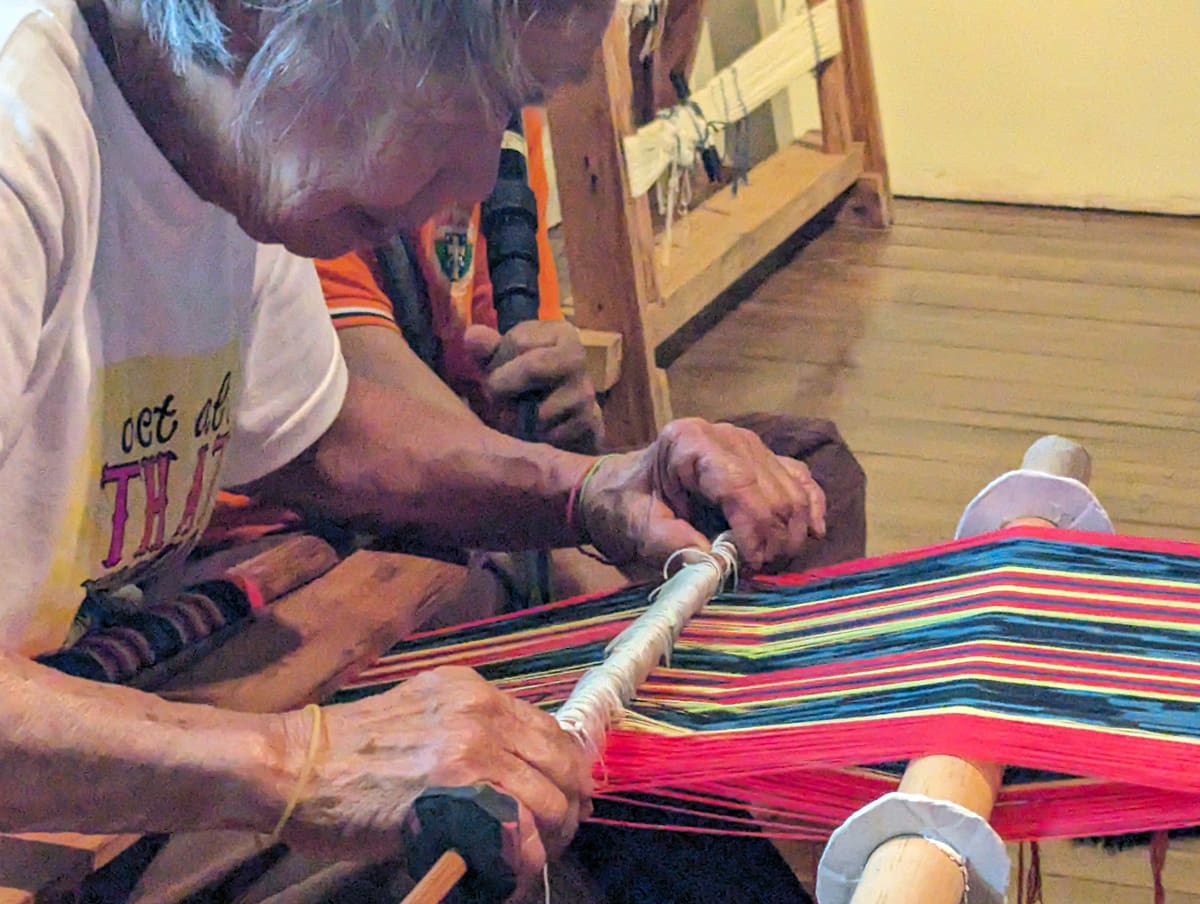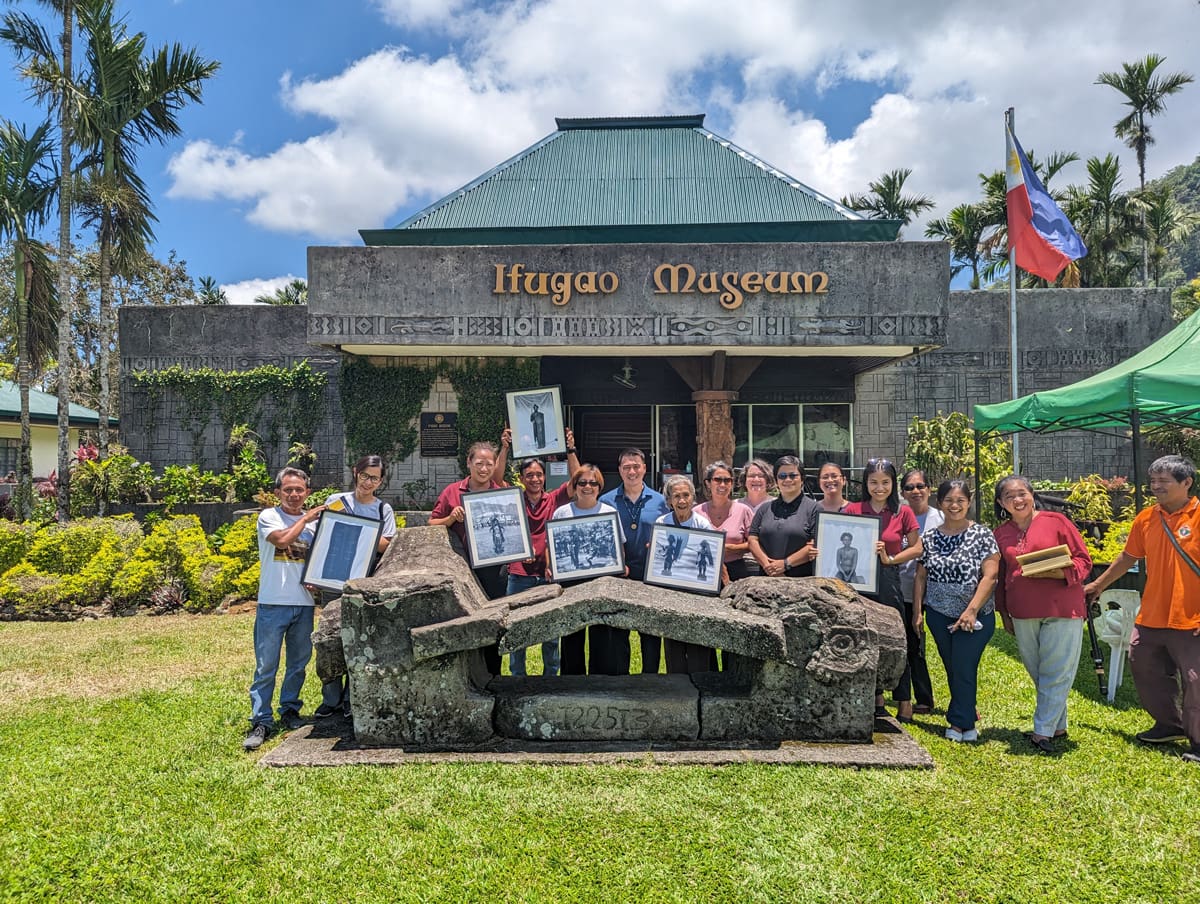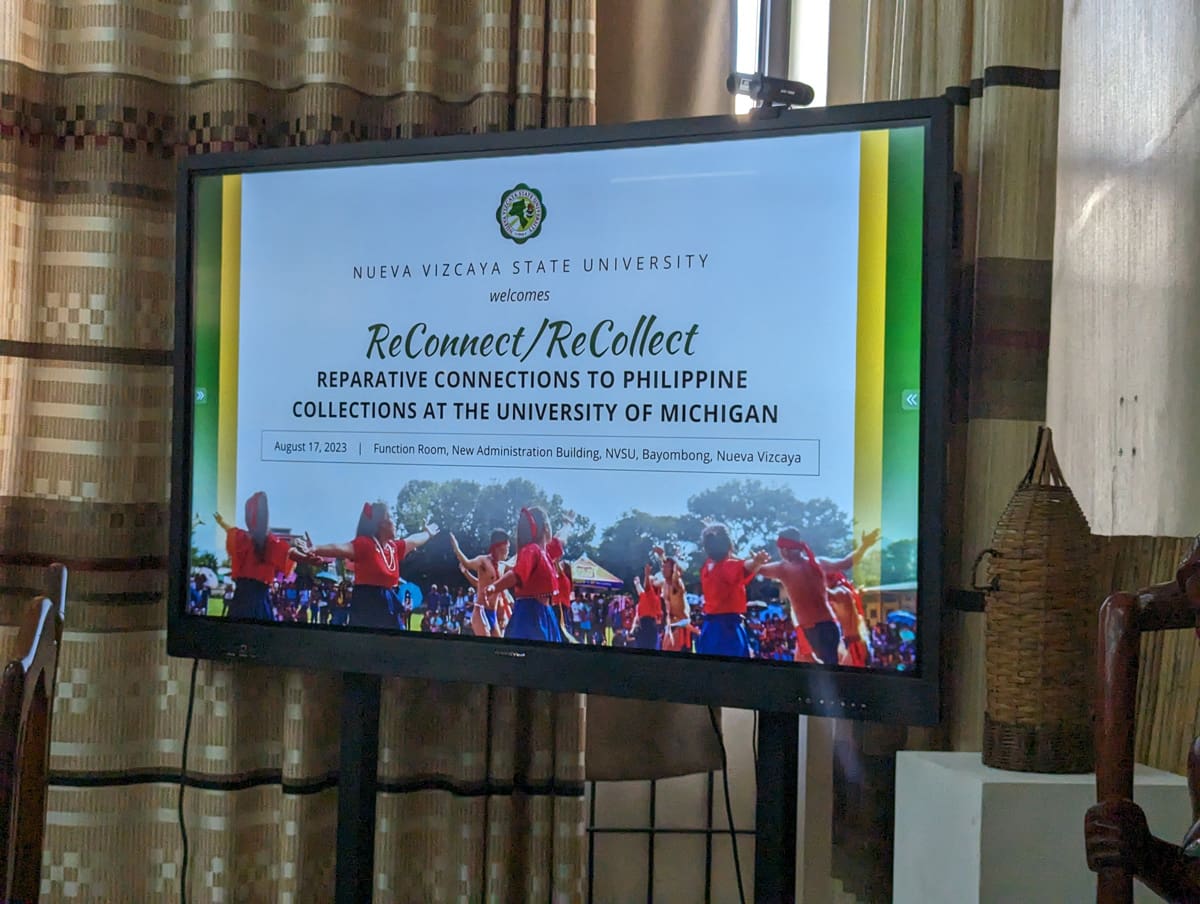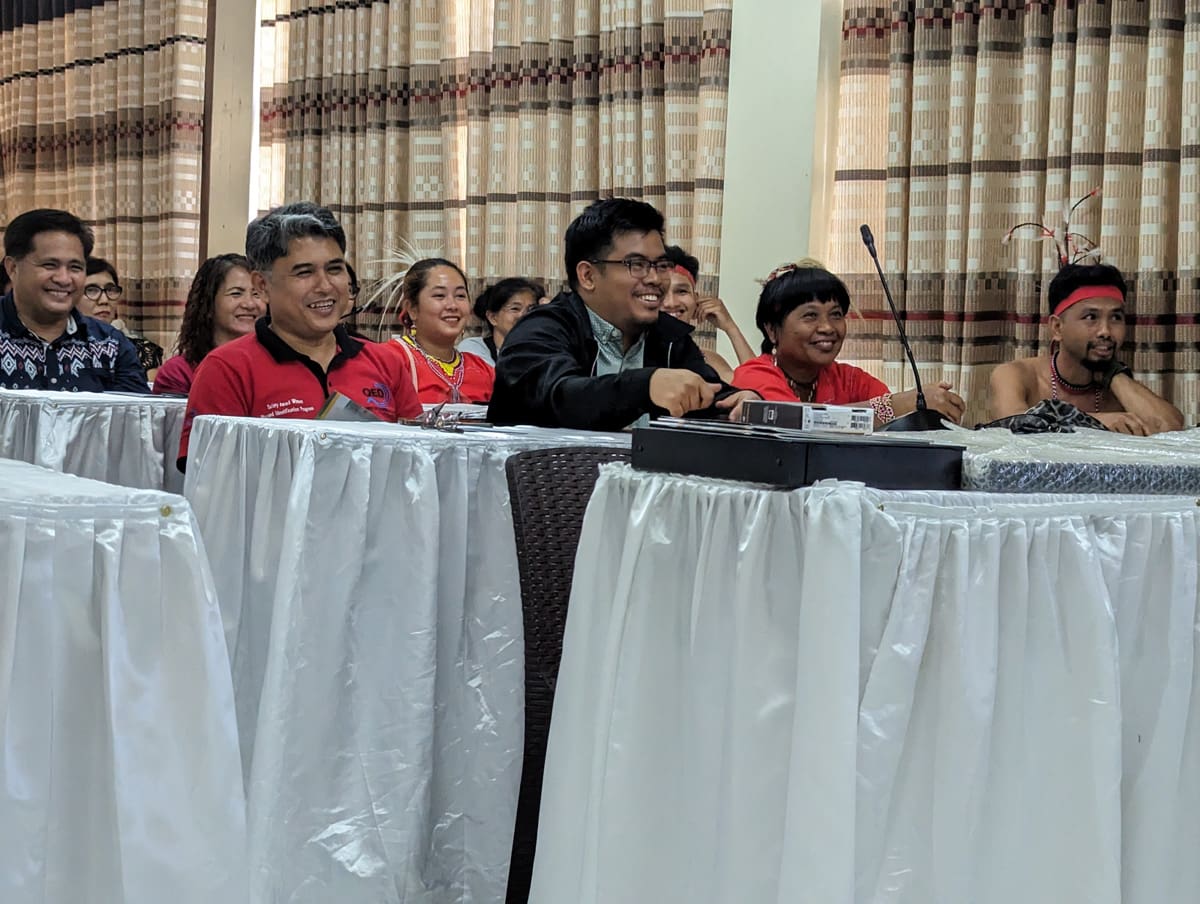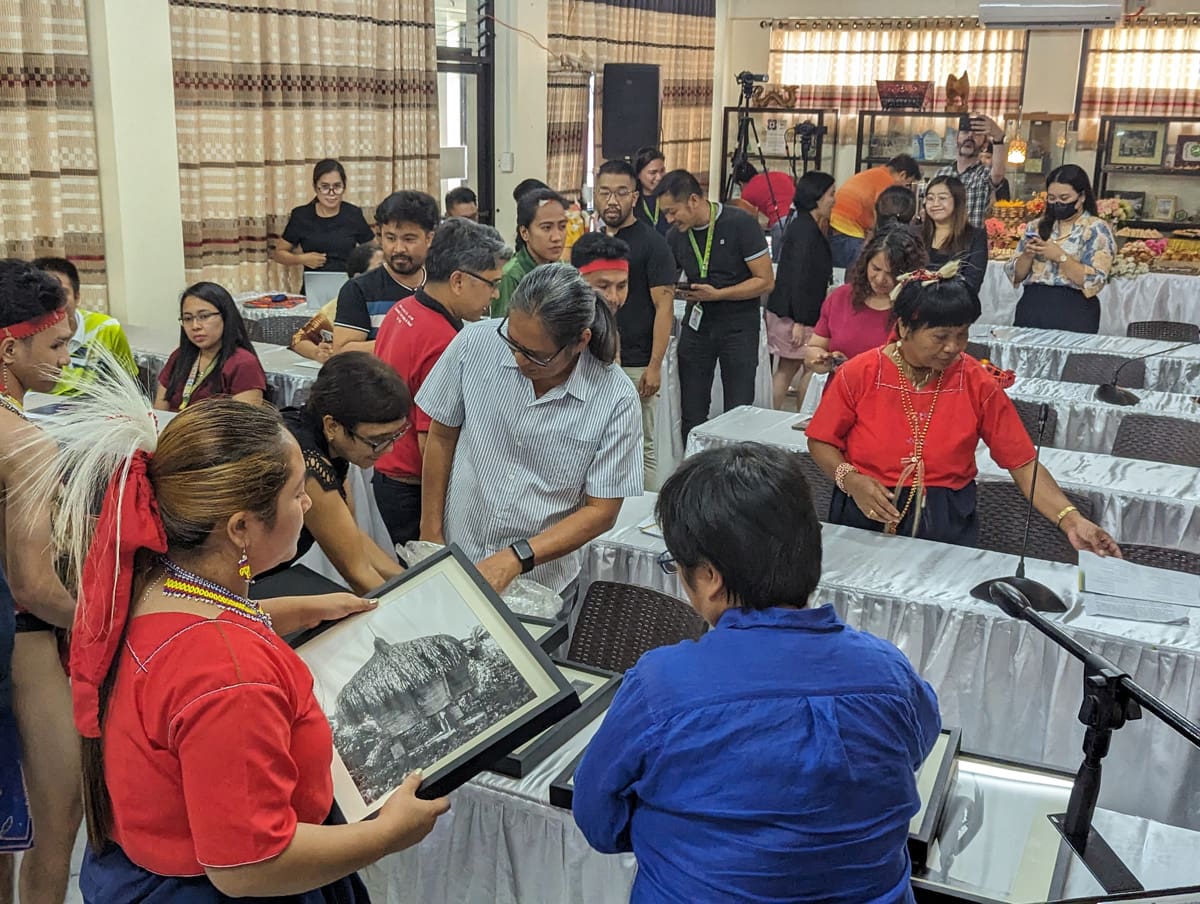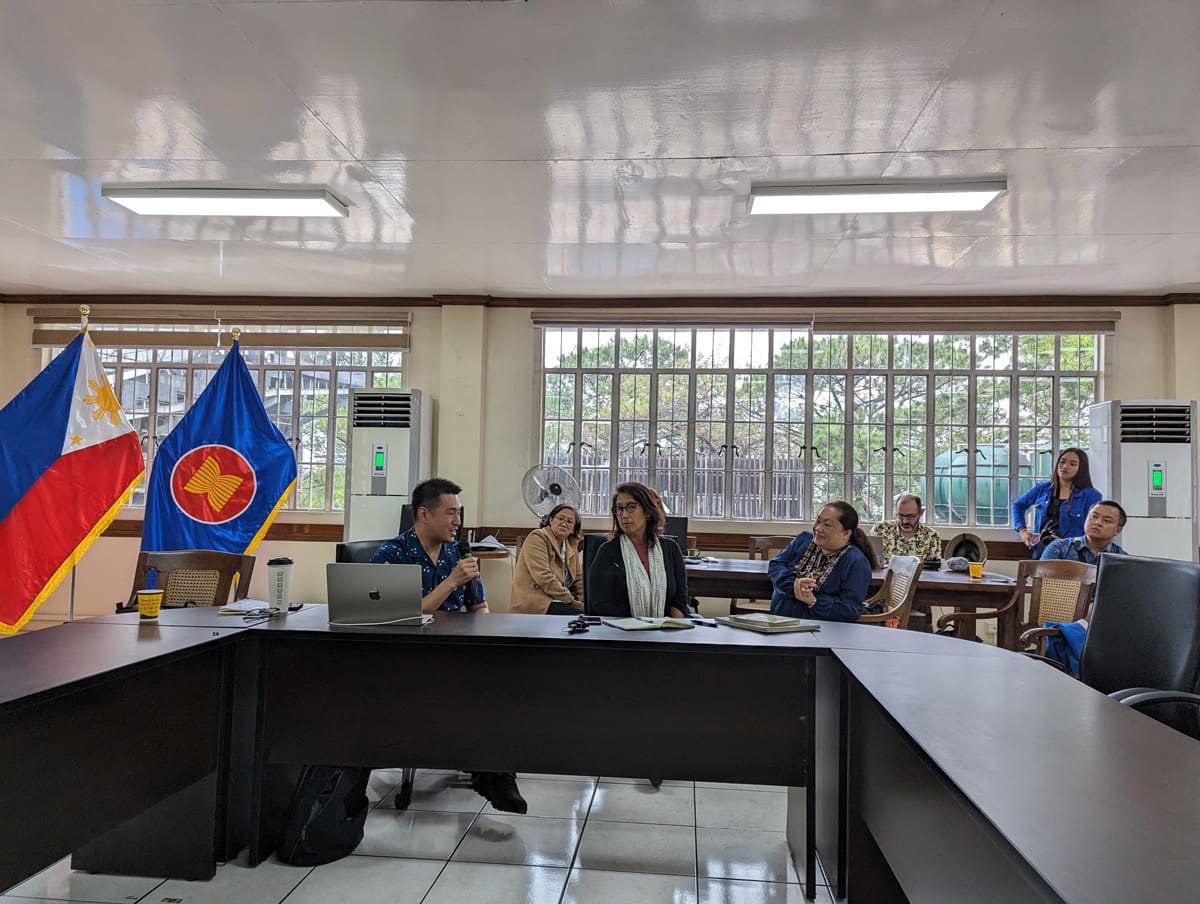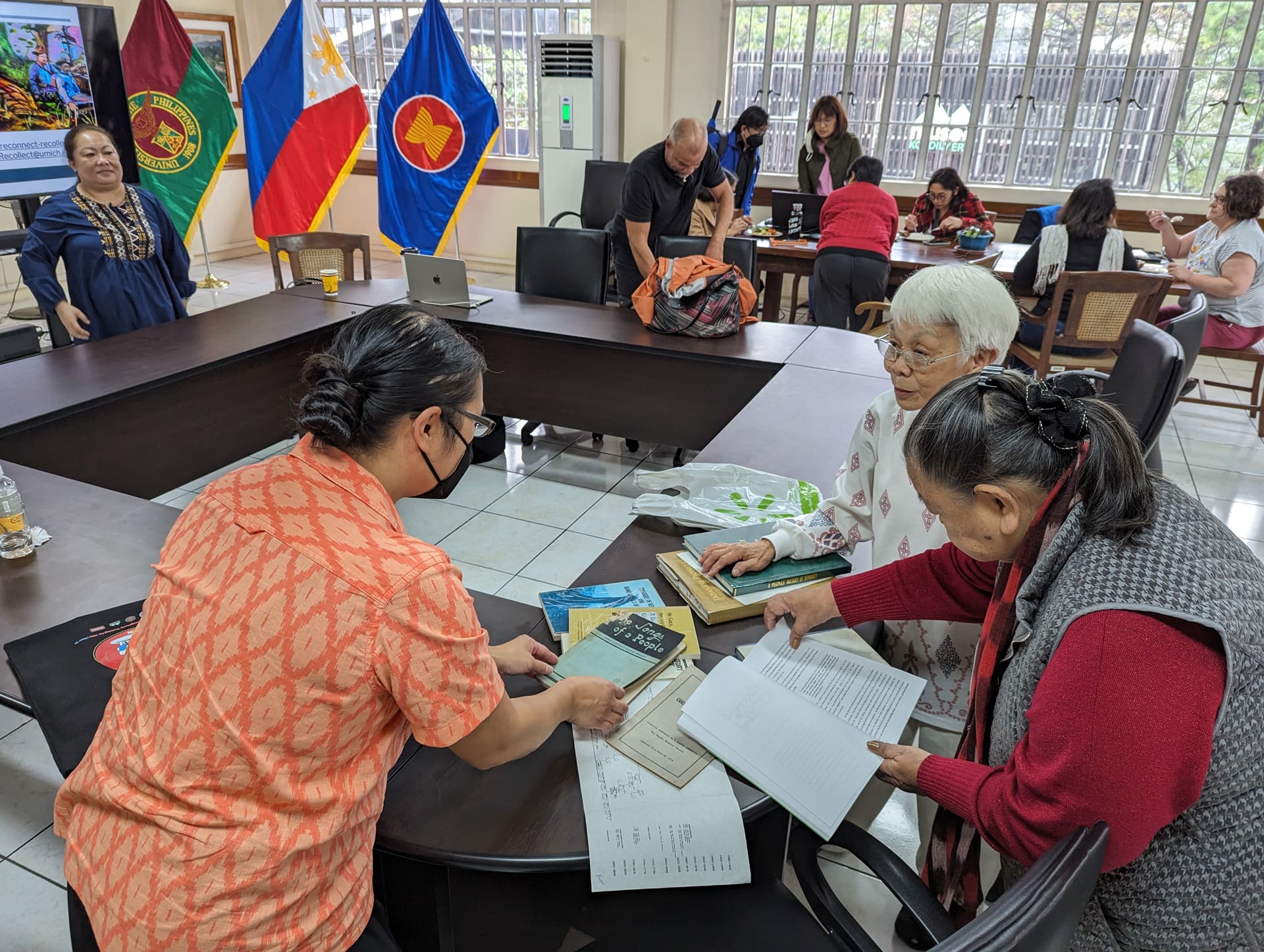Sharing Collections
ReConnect/ReCollect Goes to the Philippines
In August 2023, the ReConnect/ReCollect project facilitated the turn over of documents and photographs in digital and print formats to various community-based organizations, archives/museums, and universities in the Cordillera region of the Philippines.
The plan to deliver and disseminate copies of materials in the University’s collections was part of the original project concept. However, due to the uncertainties posed by the COVID-19 pandemic, we waited for the right moment and safer conditions to do so.
It was during the May 2023 residency with Indigenous cultural bearers, Cathy Ekid Domigyay (textile weaver – Bontoc), Johnny Bangao, Jr. (basket weaver – Kankana-ey), and Ammin Achaur (tattoo arts – Kalinga), accompanied by Baguio-based illustrator Justine Amores and cultural anthropologist Dr. Analyn Salvador Amores, that the project began to pursue this plan again. We listened to the suggestions of our visiting culture bearers, who underscored the lack of access to collections by IP communities in the Philippines. We also took the opportunity of collaborating with University of the Philippines Baguio Professor Analyn Salvador-Amores, whose expertise and local community relationships was profoundly important in identifying pathways to community consultation and dialogue.
Our visit to the communities and institutions in the Philippine Cordillera aimed to:
Distribute copies
in digital or print formats, of select materials from the Bentley Historical Library and the UM Museum of Anthropological Archaeology to communities and institutions in the Cordillera region
Facilitate dialogue
between the stewards of Philippine collections at the University and the IP communities (and organizations) on how to develop open communication and collections representation and access
Understand the infrastructures
expertise, and pathways for facilitating more collections sharing and access for communities
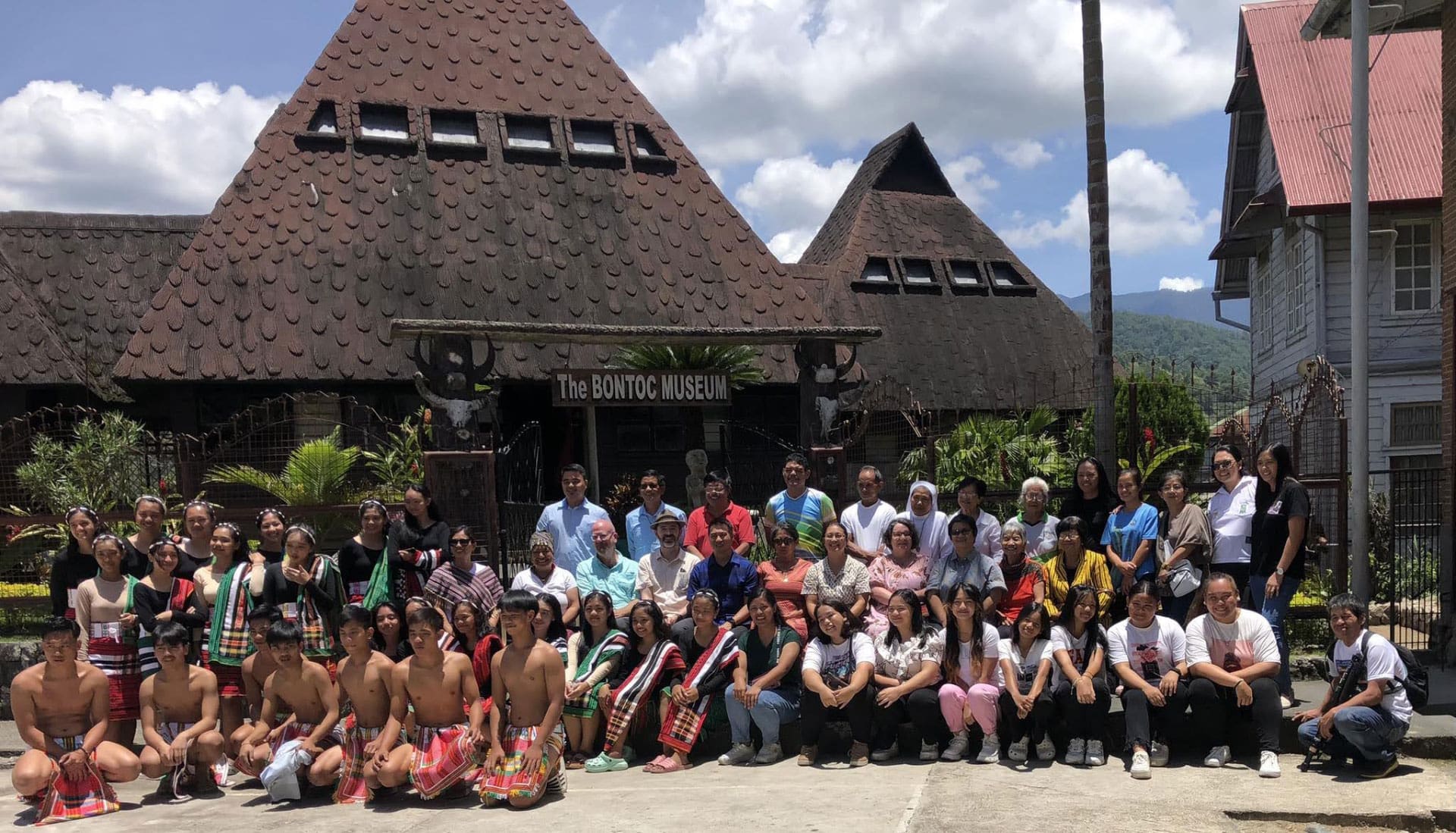
Bontoc Museum, 2023
Ultimately, in August 2023, we traveled to the Cordillera region for 10 days. We turned over archival documents, photographs, and 3-D prints of cultural items that are pertinent to the recipient communities/organizations. The communities and organizations we met with included:
- Onjon ni Ivadoy (Ibaloy Heritage House in Burnham Park, Baguio City)
- University of the Philippines Baguio, Northern Luzon Archives (Baguio City)
- Daklan Elementary School (Bokod, Benguet)
- Bontoc Museum (Bontoc, Mt. Province)
- Mountain Province State University (Bontoc, Mt. Province)
- Ifugao State University (Lamut, Ifugao)
- National Museum (Kiangan Branch) (Kiangan, Ifugao)
- Ifugao IPED Center of Kiangan (Kiangan, Ifugao)
- Nueva Vizcaya State University Museum (Bayombong, Nueva Vizcaya)
- Ilongot community of Bugkalot
- Onjon ni Ivadoy (Ibaloy Heritage House in Burnham Park, Baguio City)
- University of the Philippines Baguio, Northern Luzon Archives (Baguio City)
- Daklan Elementary School (Bokod, Benguet)
- Bontoc Museum (Bontoc, Mt. Province)
- Mountain Province State University (Bontoc, Mt. Province)
- Ifugao State University (Lamut, Ifugao)
- National Museum (Kiangan Branch) (Kiangan, Ifugao)
- Ifugao IPED Center of Kiangan (Kiangan, Ifugao)
- Nueva Vizcaya State University Museum (Bayombong, Nueva Vizcaya)
- Ilongot community of Bugkalot
Reflections and Recommendations
Our trip to Philippine Cordillera communities/organizations taught us a lot about pursuing reparative work that centers community access and dialogues.
Below are some of our insights and recommendations:
Collaborate with a local scholar engaged in community-based work
Involving the expertise of a local scholar, in this case Professor Salvador-Amores, was crucial to the project. We relied immensely on the community trust that she has built for decades. It is important to seek community anchors who will help facilitate the work.
Participate in turnover ceremonies
In-person dialogue is critical, and this often begins with a welcome ceremony. These can be festive events where community members prepare a program, a meal, and sometimes performance. Be ready to match this spirit of welcome and generosity through full participation and gift-giving.
Be aware of limits of digital access
Wireless internet, where it exists, may be slow. Cell phone data can be spotty. Power outages might be common. Hence, never assume that because collections have been digitized and are available online, communities have access to them. Digital-only projects are not substitutes for relationship-building.
Meet the community where they are
Identify and collaborate with local institutions that serve as community anchors and stewards and give multiple copies in both digital and print formats. Engage in discussion with anchor institutions to determine where copies may be best located.
Materials do not always have to end up on museum walls
Remember that for many Indigenous Peoples (IPs) the photographs we give are images of ancestors, hence some may want copies to take home or keep with them.
“Repatriation” may not appropriately capture the essence of the work
Over the course of the visit we concluded that our efforts should not be described as “repatriation,” since our activity focused on sharing access copies. Repatriation carries additional obligations and assumptions that impose economic obligations and responsibilities on receiving communities. This was beyond the scope of our goals.

